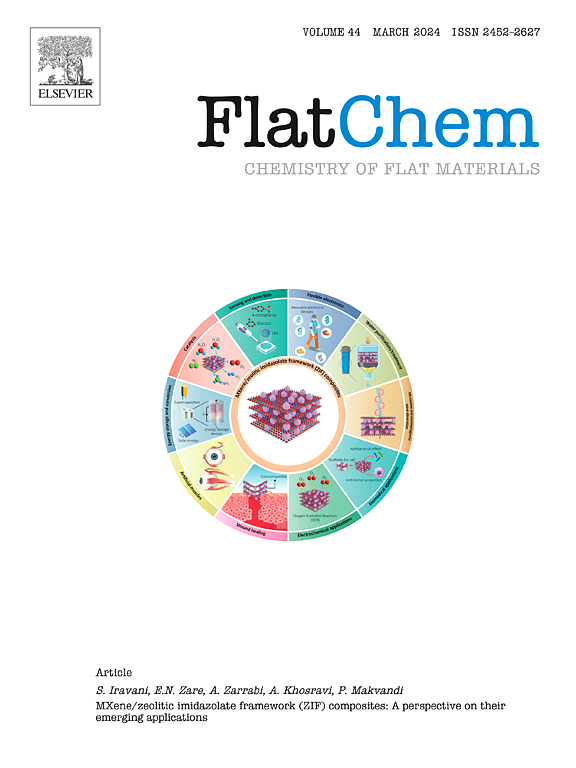A critical review on vacuum and atmospheric microwave plasma-based graphene synthesis
IF 6.2
3区 材料科学
Q2 CHEMISTRY, PHYSICAL
引用次数: 0
Abstract
Nanotechnology has brought about a paradigm shift in material science, opening a wide range of potential applications in daily uses. Graphene is one of the most important nanomaterials that have applications in electronics, optoelectronics, energy storage, health care and aerospace industries due to its unique and remarkable properties. However, the synthesis of graphene since its discovery has encountered numerous struggles and each method has its advantages and shortcomings. Plasma-based synthesis of graphene, utilising various sources such as radiofrequency (RF) plasma, direct current (DC) plasma, and microwave (MW) plasma, stands out as a promising method due to its controllability, flexibility, and scalability. Among these, microwave plasma-based synthesis is gaining rapid popularity. This method, applicable under both vacuum and atmospheric pressure conditions, offers numerous advantages over other techniques, further enhancing its appeal in the field of graphene production. However, a comprehensive assessment of these methods in terms of equipment, process parameters and their effects on graphene production and quality has not been reported. Therefore, this literature presents a clear comparison of these methods along with the future outlook.

真空和大气微波等离子体基石墨烯合成技术综述
纳米技术带来了材料科学的范式转变,在日常使用中开辟了广泛的潜在应用。石墨烯以其独特而卓越的性能,在电子、光电子、储能、医疗保健和航空航天等领域有着广泛的应用,是最重要的纳米材料之一。然而,石墨烯的合成自发现以来遇到了无数的困难,每种方法都有其优点和缺点。基于等离子体的石墨烯合成,利用各种来源,如射频(RF)等离子体、直流(DC)等离子体和微波(MW)等离子体,因其可控性、灵活性和可扩展性而成为一种有前途的方法。其中,以微波等离子体为基础的合成技术正迅速得到普及。该方法适用于真空和常压条件,与其他技术相比具有许多优势,进一步增强了其在石墨烯生产领域的吸引力。然而,对这些方法在设备、工艺参数及其对石墨烯生产和质量的影响方面的综合评估尚未见报道。因此,本文献对这些方法进行了明确的比较,并对未来进行了展望。
本文章由计算机程序翻译,如有差异,请以英文原文为准。
求助全文
约1分钟内获得全文
求助全文
来源期刊

FlatChem
Multiple-
CiteScore
8.40
自引率
6.50%
发文量
104
审稿时长
26 days
期刊介绍:
FlatChem - Chemistry of Flat Materials, a new voice in the community, publishes original and significant, cutting-edge research related to the chemistry of graphene and related 2D & layered materials. The overall aim of the journal is to combine the chemistry and applications of these materials, where the submission of communications, full papers, and concepts should contain chemistry in a materials context, which can be both experimental and/or theoretical. In addition to original research articles, FlatChem also offers reviews, minireviews, highlights and perspectives on the future of this research area with the scientific leaders in fields related to Flat Materials. Topics of interest include, but are not limited to, the following: -Design, synthesis, applications and investigation of graphene, graphene related materials and other 2D & layered materials (for example Silicene, Germanene, Phosphorene, MXenes, Boron nitride, Transition metal dichalcogenides) -Characterization of these materials using all forms of spectroscopy and microscopy techniques -Chemical modification or functionalization and dispersion of these materials, as well as interactions with other materials -Exploring the surface chemistry of these materials for applications in: Sensors or detectors in electrochemical/Lab on a Chip devices, Composite materials, Membranes, Environment technology, Catalysis for energy storage and conversion (for example fuel cells, supercapacitors, batteries, hydrogen storage), Biomedical technology (drug delivery, biosensing, bioimaging)
 求助内容:
求助内容: 应助结果提醒方式:
应助结果提醒方式:


